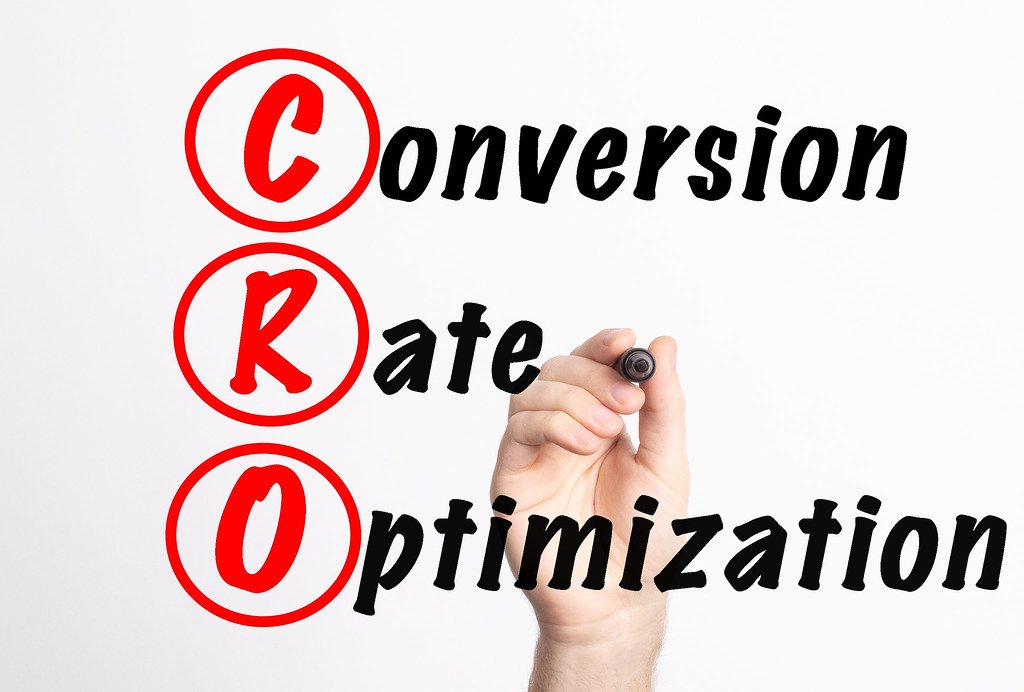Unlocking eCommerce’s full potential is like unraveling a complex code hiding untold treasures and growth opportunities. In this article, we embark on an exhilarating journey to decode the secrets of eCommerce growth metrics, unveiling the key indicators that pave the path to success. Brace yourself for a captivating exploration, where facts meticulously merge with imagination, as we dive into the depths of this digital realm. Prepare to transcend the ordinary, for it’s time to crack the code and unravel the mysteries behind eCommerce’s exponential growth.
Table of Contents
- Understanding Key eCommerce Growth Metrics
- Analyzing Conversion Rate: A Pathway to Success
- Leveraging Customer Lifetime Value for Sustainable Growth
- Optimizing Acquisition Channels for Increased Sales
- Q&A
- Wrapping Up
![]()
Understanding Key eCommerce Growth Metrics
In the fast-paced world of eCommerce, tracking and understanding key growth metrics is essential for any online retailer striving to stay ahead. These metrics not only provide insights into the performance of your business, but they also unlock valuable opportunities for improvement and expansion. Let’s delve into the world of eCommerce growth metrics and decode the secrets to success!
1. Conversion Rate: This metric measures the percentage of website visitors who make a purchase. A higher conversion rate indicates that your online store is effectively enticing customers to complete their purchases. By analyzing this metric, you can identify areas where conversion rates dip and make necessary adjustments to your website’s design, user experience, or product offering.
2. Average Order Value (AOV): This metric represents the average amount of money each customer spends per transaction. Tracking AOV helps you determine the effectiveness of your upselling and cross-selling strategies. By encouraging customers to add more items to their carts or promoting bundled packages, you can increase your AOV and subsequently boost your revenue.

Analyzing Conversion Rate: A Pathway to Success
Understanding the intricacies of conversion rate is vital for any eCommerce business aspiring to achieve exponential growth. We often hear the term “conversion rate” thrown around, but what does it really mean? In simple words, conversion rate refers to the percentage of website visitors who complete a desired action, such as making a purchase or subscribing to a newsletter.
Analyzing conversion rate provides invaluable insights into the effectiveness of your marketing efforts and the user experience you offer. By tracking this metric, you can optimize your website, identify potential bottlenecks, and improve your overall conversion funnel. But how exactly can this pathway to success be decoded? Let’s uncover some key steps:
- Define your conversion goals: Before diving into data analysis, it’s crucial to clearly define what constitutes a conversion for your business. Is it a completed purchase, a form submission, or perhaps another action altogether? Defining your conversion goals sets the foundation for accurate measurement.
- Track the right metrics: While conversion rate is a fundamental metric, it’s important to track other relevant metrics as well. This could include average order value, bounce rate, or cart abandonment rate. Monitoring these metrics in conjunction with conversion rate helps you identify patterns and uncover areas for improvement.
- Segment your data: Analyzing your conversion rate on a holistic level provides a general overview, but diving deeper into segmented data allows you to gain deeper insights. For example, you can analyze conversion rate based on traffic sources, device types, or user demographics. This helps you understand which segments perform well and where adjustments need to be made.
- A/B testing: To truly optimize your conversion rate, experimentation is key. Conducting A/B tests allows you to compare different versions of your website or marketing messages to determine which performs better. Whether it’s testing different headlines, button placements, or product descriptions, A/B testing helps you refine your strategies and maximize conversions.
- Continual optimization: Analyzing your conversion rate is an ongoing process. Regularly analyze your data, identify trends, and adjust your strategies accordingly. By constantly optimizing your conversion funnel, you can keep your eCommerce business on a steady path towards success.

Leveraging Customer Lifetime Value for Sustainable Growth
Customer Lifetime Value (CLV) is a crucial metric that all eCommerce businesses need to understand in order to achieve sustainable growth. It represents the total value a customer brings to your business over their entire relationship with your brand. By effectively leveraging CLV, you can not only boost your revenue, but also establish a loyal customer base that will drive long-term success. Here, we will explore how you can crack the code of CLV and use it as a powerful tool for sustainable growth in the world of eCommerce.
1. Personalized Marketing: CLV allows you to gain insights into different customer segments based on their value to your business. By identifying high-value customers, you can develop targeted marketing strategies to nurture and retain them. For instance, offering exclusive discounts or tailored recommendations to loyal customers can help them feel valued and increase their lifetime value to your business.
2. Customer Retention: Acquiring new customers can be costly, so it’s important to focus on retaining your existing customer base. By understanding the CLV of your customers, you can implement retention strategies that maximize their lifetime value. This could include providing exceptional customer service, implementing loyalty programs, or offering incentives for repeat purchases. By prioritizing customer retention, you can build lasting relationships and encourage customers to become brand advocates, driving sustainable growth through positive word-of-mouth.
3. Upselling and Cross-selling: CLV analysis can also help you identify opportunities for upselling and cross-selling. By understanding the purchasing patterns and preferences of your customers, you can personalize your product recommendations and capitalize on their potential to spend more. For example, Amazon uses CLV data to provide targeted product suggestions based on previous purchases, significantly boosting their revenue.
By leveraging CLV, eCommerce businesses can unlock the potential for sustainable growth. By focusing on personalized marketing, customer retention, and capitalizing on upselling and cross-selling opportunities, you can build a customer base that not only generates higher revenue, but also supports long-term profitability. So, dive into the world of CLV and crack the code for your eCommerce success!
Optimizing Acquisition Channels for Increased Sales
When it comes to eCommerce growth, understanding and optimizing acquisition channels is key. In this post, we will unlock the secrets of effectively leveraging these channels to drive sales and boost your online business.
To begin, let’s explore some of the most powerful and widely used acquisition channels:
- Search Engine Optimization (SEO): SEO plays a crucial role in attracting organic traffic to your website. By optimizing your site for search engines, you can improve your visibility and drive qualified leads. Focus on keyword research, on-page optimization, and building quality backlinks to enhance your SEO efforts.
- Pay-Per-Click (PPC) Advertising: PPC advertising allows you to bid on keywords to display targeted ads on search engines. Platforms like Google Ads and Bing Ads enable you to reach potential customers at the precise moment they are searching for products or services similar to what your business offers.
- Social Media Advertising: With billions of users on platforms like Facebook, Instagram, and Twitter, social media advertising presents a tremendous opportunity to connect with your target audience. Develop compelling ad campaigns and leverage advanced targeting options to ensure your ads are seen by the right people.
- Email Marketing: Building an email list is like having a direct line of communication with potential customers. Craft engaging newsletters and personalized email campaigns to nurture relationships, re-engage dormant users, and promote your latest products or offers.
By strategically managing and optimizing these acquisition channels, you can drive more targeted traffic to your eCommerce store, increase brand visibility, and ultimately boost sales. Embrace data-driven decision making, regularly monitor your metrics, and adapt your strategies accordingly to maximize your growth potential!
Q&A
Q: What is the secret behind eCommerce growth metrics?
A: Cracking the code to unveil eCommerce growth metrics requires a keen understanding of data analysis, customer behavior, and strategic decision-making.
Q: Why are eCommerce growth metrics so important?
A: eCommerce growth metrics serve as a compass for businesses, guiding them towards success by providing invaluable insights into sales performance, customer engagement, and overall business growth.
Q: How can businesses effectively measure their eCommerce growth?
A: To effectively measure eCommerce growth, businesses should analyze key metrics such as Conversion Rate, Average Order Value, Customer Lifetime Value, and Return on Ad Spend. These metrics shed light on the effectiveness of marketing strategies, customer satisfaction, and revenue generation.
Q: What are some common challenges in deciphering eCommerce growth metrics?
A: One common challenge is the overwhelming amount of data available, making it difficult to identify the most relevant and actionable insights. Additionally, distinguishing between correlation and causation can be challenging, as certain metrics may appear connected without truly impacting growth.
Q: How can businesses leverage eCommerce growth metrics to boost their sales?
A: By analyzing metrics like customer acquisition cost and customer retention rate, businesses can make informed decisions regarding marketing channels, targeting strategies, and product offerings. This data-driven approach allows for targeted and efficient investments to increase sales.
Q: What role does customer behavior play in eCommerce growth metrics?
A: Understanding customer behavior is pivotal in deciphering eCommerce growth metrics. By analyzing metrics like bounce rate, time on site, and cart abandonment rate, businesses can identify pain points in the customer journey and optimize their user experience to enhance conversion rates.
Q: How can businesses use eCommerce growth metrics to stay competitive?
A: eCommerce growth metrics provide businesses with a competitive edge by offering a deep understanding of market trends, consumer preferences, and competitor performance. This knowledge allows for proactive decision-making and the ability to adapt strategies for sustained growth.
Q: Are there any pitfalls to be cautious of when interpreting eCommerce growth metrics?
A: It’s important to be cautious of vanity metrics, which may provide a superficial perception of growth without indicating sustainable success. Additionally, relying solely on metrics without considering the broader context could lead to misguided decisions.
Q: What are some best practices for utilizing eCommerce growth metrics?
A: Implementing regular monitoring and analysis of key metrics, aligning growth metrics with business objectives, and conducting A/B testing are all best practices in utilizing eCommerce growth metrics. Additionally, continuous learning and adaptation based on data-driven insights are crucial for sustained growth.
Q: In conclusion, why are eCommerce growth metrics essential for businesses?
A: eCommerce growth metrics serve as an indispensable tool for businesses to evaluate their performance, identify opportunities for improvement, and optimize their strategies to unlock substantial growth potential. By deciphering the code of eCommerce growth metrics, businesses can navigate the competitive landscape and achieve long-term success.
Wrapping Up
In the intricate world of eCommerce, where numbers often hold the key to success, unraveling the secrets of growth metrics becomes an exhilarating quest. We have ventured deep into the digital depths, cracked the code, and now it’s time to bid farewell, but not without sharing our newfound wisdom.
As we brave the ever-changing tides of online retail, the significance of eCommerce growth metrics can no longer be overlooked. They paint a vivid picture of a business’s journey, a mosaic of intricately woven data points, revealing the story of success or illuminating the path towards improvement.
Throughout this expedition, we dived headfirst into the murky waters of customer acquisition cost (CAC), discovering that this crucial metric is the compass that guides businesses towards the most profitable battlegrounds. Armed with this knowledge, one can now steer clear of treacherous marketing waters and navigate toward sustainable growth.
No voyage would be complete without exploring the boundless potential of customer lifetime value (CLV), an astronomical metric that captures the true essence of a business’s relationship with its customers. This metric, a lighthouse in the tempestuous sea of churn, enables businesses to nurture customer loyalty, fostering long-lasting connections that transcend a single transaction.
And let us not forget the steadfast companion on this exhilarating journey – conversion rate optimization (CRO). This master of strategy transforms mere window shoppers into loyal devotees, unlocking the hidden potential of every virtual cart, imbuing businesses with the power to turn idle clicks into resounding chimes of success.
As the curtain falls on this enthralling tale of eCommerce growth metrics, we encourage you to embrace the knowledge gained and unleash it upon your own online empire. Harness the power of CAC, nurture the essence of CLV, and let CRO be your guiding light. For in this digital realm of endless possibilities, the code has been cracked, and the future of eCommerce growth lies within your grasp.
As we part ways, remember that in the constant evolution of online retail, growth is not a singular moment, but a journey that unfolds with each passing day. May your metrics continue to rise, your numbers flourish, and your success be a testament to the dedication and perseverance you bring to the world of eCommerce.
Farewell, dear reader, and may your path be forever illuminated by the divine glow of growth metrics!

